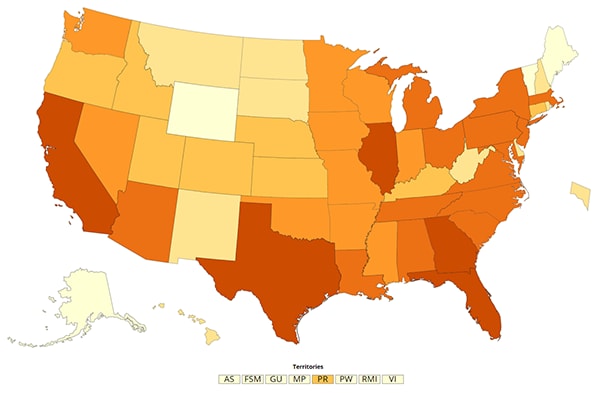Received this email from a friend? Sign up now |
|---|
September 28, 2020 This message includes updates on the COVID-19 response from CDC. The COVID-19 Outbreak is a rapidly evolving situation and information will be updated as it becomes available. |
|---|
How to Select, Wear, and Clean Your MaskWear a mask correctly and consistently for the best protection. Be sure to wash your hands before putting on a mask and do not touch the mask when wearing it. Make sure the mask covers your nose and mouth and fits securely under your chin and against the sides of your face. DO choose masks that
|
|---|
COVID-19 in Children and TeensWhile fewer children have been sick with COVID-19 compared to adults, children can be infected and get sick with COVID-19. Children can spread the virus that causes COVID-19 to others. The symptoms of COVID-19 are similar in adults and children and can look like other common illnesses, like colds, strep throat, or allergies. The most common symptoms of COVID-19 in children are fever and cough. Monitor your child daily for symptoms, keep track of who your child comes into close contact with. If your child gets sick, keep them home and call their healthcare provider. |
|---|
Resources for Children and Teens, and Other PopulationsAccording to a new CDC MMWR, since March, 277,285 COVID-19 cases in children have been reported. The rate of COVID-19 among adolescents aged 12–17 years was approximately twice that in children aged 5–11 years. Underlying health conditions were more common among school-aged children who experienced severe outcomes related to COVID-19. In addition to K-12 schools and people age 15 to 21, CDC has developed one-stop shop toolkits for different populations with web resources, FAQs, posters, and other information. Help Protect Yourself and Others from COVID-19
|
|---|
Data on COVID-19 during PregnancyBased on current information, pregnant people might be at an increased risk for severe illness from COVID-19 compared to non-pregnant people. If you’re pregnant, you should still visit your healthcare provider for all recommended appointments. While at your appointment, talk to your healthcare provider about how to stay healthy and take care of yourself and your baby. |
|---|
People at Increased RiskWhile people at increased risk for COVID-19 include older people and people with certain medical conditions, others may need to take extra precautions. People who need extra precautions include certain racial and ethnic minority groups, people who are pregnant or breastfeeding, people with disabilities, and people living in certain environments such as homeless shelters. |
|---|
Coronavirus Disease 2019 (COVID-19) in the U.S. |
|---|
As of September 28, 2020 In the United States, there have been 7,095,422 confirmed cases of COVID-19 detected through U.S. public health surveillance systems in 50 states and the District of Columbia, Puerto Rico, Guam, the Northern Marianas Islands, and U.S. Virgin Islands. CDC provides updated U.S. case information online daily. |
|---|
|
|---|

